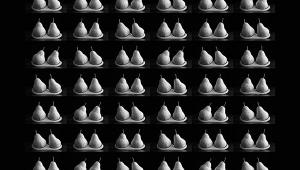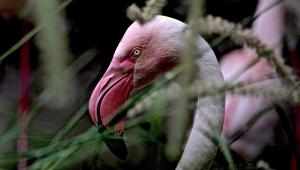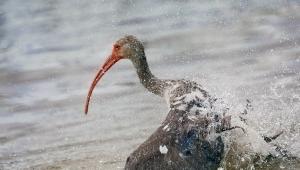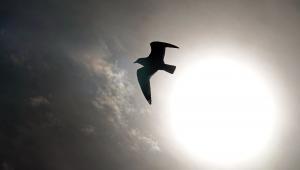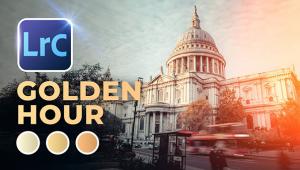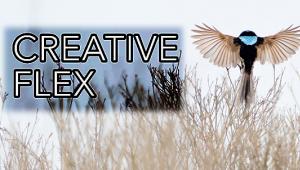Fine Art Photography Tips: Matthew Brandt Explains How He Mixes Things Up

“This is one of the pictures that I took with my first camera. I shot a bunch of pictures around Flint, Michigan, on black-and-white 35mm film. Then I returned to my hotel, devised a makeshift darkroom in the bathroom, and developed the negatives using Flint tap water and vitamin C. That solution is enough to develop silver film. Then I made prints from these negatives using the same chemistry, with the addition of rapid fixer. I toned the prints with red wine and applied bleach over some areas.” This image is from the “Flint” series. Photos © Matthew Brandt
Can you picture yourself burying a C-print in the ground halfway around the world? Or perhaps dunking a print in a lake, processing a print with tar from the La Brea Tar Pits, or streaming electricity through an entire photo exhibit interconnected with live wires to switch on a light bulb? And all for the sole purpose of artistic expression? That defines the uniquely imaginative and forward-thinking work of Matthew Brandt.
Brandt leaves no stone unturned when it comes to his experimental photography with mixed media. Each print is a unique form of expression—a one of a kind, never to be repeated.
Granted, they’re not all successes. And perhaps the analogy is a bit far-fetched, but hearing Brandt proclaim “It’s alive!” as Dr. Frankenstein did when his creature came to life is not outside the bounds of imagination when success is at hand and a print becomes gallery-worthy.
Each print does in fact take on a life of its own once the finished artwork sees the light of day. Let’s find out how Brandt does it.
The Backstory
Matthew Brandt grew up surrounded by an appreciation for photography. His father, David Allan Brandt, a highly successful commercial photographer, is known for his elaborate, imaginative sets. The younger Brandt apparently absorbed some of that, but like the evolutionary tree, branched off in an entirely different direction, giving birth to some unusual twists and turns en route to finding his own artistic vision.
Additional influences played a role in shaping Matthew Brandt’s graphic style of photography. Photographers he worked with or studied under while at Cooper Union or UCLA, where he earned his master’s degree, include Robert Polidori, James Welling, and Walid Raad.
However, it’s not only people who inspire Brandt. “Travel definitely helps,” he said. “It allows me to come back and see things with fresh eyes, and suddenly the familiar becomes strange. There are also day-to-day things that I do, such as watering the plants and watching things grow and develop in our garden. Even just going into a store and finding neon crayons sparks new ideas.”
A Defining Moment
Was there a defining moment in Brandt’s life when he realized he was destined to depart from traditional photography, take the proverbial road less traveled, and pave new paths in visual thinking? Oddly enough, it may have started with a cherry pit.

“This involves water from the Flint River (Michigan) that I collected. I color-separated the image in Photoshop and isolated the cyan, magenta, and yellow channels, and then printed each separately on Duraclear (a polyester-based display film). And I ran them through a waterfall pump system so the water would cascade over the prints over time. Those lines you see represent water constantly running over and eroding the print. Since there are three separate pictures eroded in different spots, once I sandwiched them together, they created different color interactions. So, for example, where only the cyan was eroded and the magenta and yellow were left, that’s where you get red.” This image is from the “Waterfalls” series.
Brandt recalled: “What was my first conscious effort at experimental photography? I remember using a cherry pit from a beverage I’d ordered at a restaurant to draw a picture on a paper tablecloth.” Granted, this didn’t involve photography per se, but it was the germinating acorn that buried itself in his psyche and was allowed to grow into a cornucopia of ideas.
Brandt’s Process
For Brandt, the finished print is rarely, if ever, the finished product. “Essentially what I’m doing with this process is letting the subject influence its own image and print size,” he explained. “If I’m working with breast milk, the print is small; if I’m working with an ocean, the print is big.” Print sizes vary from two inches to six-feet tall by 12-feet long. Brandt also makes a lot of his own negatives, on an Epson 11880 inkjet printer.

The magic ingredient here was the subject’s mucus, in place of a salt solution, when forming the light-sensitive emulsion. This image is from the “Portraits” series.
He continued: “I sometimes make normal inkjet prints, but I feel as if I can’t make a picture without considering the material in relation to the subject, and vice versa. For example, inkjet prints I’ve made capturing stacks of inkjet cartridges. I put the same sheet of paper through the inkjet printer over and over again, printing on top of itself. And the ink builds up and eventually thickens.” The result: something fresh and distinctive.

“This is from a series where I photographed tropical forests on Oahu, Hawaii, and then buried the C-prints in the ground in Wai’anae, which is on the Leeward Coast of the island. I roll the prints up before putting them in the ground, so they develop this layered effect, and I may add burlap or other fabric as I roll the paper so that the fabric patterns imprint on the surface of the print.” This image is from the “Wai’anae” series.
Brandt uses all types of papers, but he doesn’t stop there. “I’ve even hand-made my own substrates, for example, from a tree. I’ve also made charcoal for use as pigment from the same tree, to make a picture of the tree out of the tree. The substrates that I made from a tree were used in silkscreens.”
Is there a regimented methodology? “Serendipity is definitely the objective and main ingredient,” Brandt said. “But after a while, you can get an idea of what to expect, to a certain extent, but it also depends on the project. In certain situations, for instance when I buried prints in the ground or soaked them in lake water, you can’t really control that, other than for how long you allow the process to continue. You can’t be sure what your results will be, although you do have a sense of the direction it will take after doing it a few times. And you do know, for instance, that if you leave a print in the ground for six months, versus one month, the print will become increasingly degraded the longer it stays buried.”

These are two mounted prints joined to form a diptych. “I used a heliograph,” the first photomechanical reproduction process invented by Niépce, which ultimately led to the daguerreotype. “He used bitumen of Judea (a form of asphalt) on a pewter plate. He made an exposure and washed what wasn’t hardened with UV and lavender oil. So I essentially used the same process, but instead of bitumen of Judea, I used tar collected from the La Brea Tar Pits, in Los Angeles. The subject is a prehistoric animal skeleton that was unearthed from this tar. I photographed the skeleton in the adjacent George C. Page Museum.” This image is from the “La Brea” series.
An Appreciation for Something Different
Looking at Brandt’s work, even without holding the print in one’s hands, you get the impression that you’re looking at images that have a tactile quality and added dimension. We may not see it or feel it, but we can sense the deeper meaning.

“This is a C-print that I shot on 4x5 color negative film. I soaked that print in Shasta Lake water. All the color craziness comes from the water interacting with the C-print and breaking down the inherent color layers in the paper.” This image is from the “Lakes and Reservoirs” series.
“Thinking of the tactile quality of the picture is important to me,” Brandt explained. “Every print is always different and I’m capitalizing on that, and it’s part of the fun. I grew up learning about silver gelatin processes and wet chemical photography. Then digital came in and it offered a shift in terms of thinking about photography and image-making. I think I may be holding on to some of that tangibility. Working with ones and zeros is a very different relationship than thinking about making prints and light transmission. It’s no longer chemistry. It’s more like programming.”

This began as a photograph that Brandt shot in Changsha, in Hunan Province, China. For an electrifying exhibit, he prepared a series of pictures as circuit boards, so that electricity would run through them, terminating in a light bulb that would light up. This image is from the “Circuit Boards” series.
Whether you look at Brandt’s work as a combination of ones and zeros or as analog photography, the result is the same: a unique vision leading to a unique outcome.
Matthew Brandt operates out of Los Angeles. To see more of his work and learn about his gallery exhibits, visit matthewbrandt.com.
What’s in Brandt’s Gear Bag
• Canon EOS 5DS
• Canon EF 24-105mm f/4 lens
• Tamrac shoulder bag
• Plastic bag
• Notebook
• Pen
• Lens cleaning cloth
Brandt’s Favorite Gear
“It’s hard to list one favorite photographic item because every item works in relation to one another. But one product I like is 8x10 Polaroid film Type 809. Polaroid is a mysterious product, and a magical medium in its own right.”
- Log in or register to post comments











